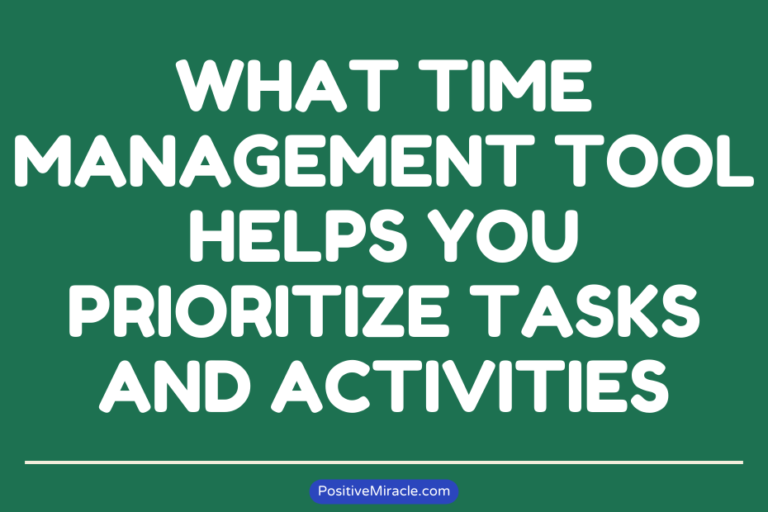Unlock Success with Time Management Study Tips

Do you ever feel like there just aren’t enough hours in the day to accomplish everything you need to do as a student? Are you constantly overwhelmed by endless assignments, exams, and extracurricular activities? If so, it’s time to master the art of effective time management. But where do you even begin? How can you optimize your time to achieve academic success while still enjoying your life outside of school?
In this article, we will explore proven time management techniques and strategies specifically tailored to students. From prioritizing tasks and setting goals to utilizing technology and combating distractions, you will discover practical tips to help you take control of your time and unlock your full potential.
Key Takeaways:
- Mastering time management is essential for students to excel academically and maintain a healthy work-life balance.
- Effective time management involves prioritizing tasks, setting goals, and creating efficient schedules.
- Utilizing technology, practicing social media detox, and embracing focus mode can enhance time management skills.
- Implementing techniques like the Pomodoro Technique and the 2-Minute Rule can further improve time management for students.
- By developing an effective time management system, you can optimize your time and achieve your academic and personal goals.
Techniques for Student Time Management
Prioritizing tasks with purpose allows you to focus on what is most important and allocate your time effectively. Setting SMART goals ensures that you have clear objectives to work towards. Crafting effective schedules helps you create a structure for your time, allowing for efficient planning and organization.
Utilizing technology as a tool can aid you in managing your time more efficiently. Consider using apps and tools such as calendar apps, task management apps, and time tracking apps to stay organized and on track with your responsibilities.
Taking a social media detox can also be beneficial in reducing distractions and increasing productivity. Try setting specific times during the day to check social media, and outside of those times, focus on your tasks without interruptions.

Another effective technique to enhance your focus and productivity is to embrace the Pomodoro Technique. This technique involves working intensely for short periods, typically 25 minutes, followed by a brief break of 5 minutes. Repeat this cycle for a set number of sessions and then take a longer break. This approach allows you to maintain concentration and avoid burnout.
By implementing these techniques and strategies, you can optimize your time and achieve success in your academic pursuits. Let’s explore these techniques in more detail:
1. Prioritizing Tasks
When faced with multiple tasks, it’s essential to identify which tasks are most important and require immediate attention. Prioritize your tasks based on urgency and importance, allowing you to focus on what matters the most.
2. Setting SMART Goals
SMART goals are specific, measurable, achievable, relevant, and time-bound. By setting SMART goals, you give yourself a clear target to work towards, which helps you stay focused and motivated.
3. Crafting Effective Schedules
Creating a well-structured schedule enables you to plan your time efficiently. Divide your day into blocks dedicated to specific tasks or activities, ensuring you allocate enough time for each one. Incorporate breaks to rest and recharge, maximizing your overall productivity.
4. Technology as a Time Management Tool
Take advantage of the various technological tools available to aid in time management. Calendar apps can help you keep track of deadlines and important events, while task management apps can assist in organizing and prioritizing your tasks. Additionally, time tracking apps can provide insights into how you spend your time, allowing you to make adjustments as needed.
5. Social Media Detox
Digital distractions, such as social media, can consume a significant amount of your time. Consider implementing a social media detox by limiting the time you spend on social platforms. This can help you stay focused and reduce time wasted on non-productive activities.
6. Embrace Focus Mode
Eliminate distractions by embracing focus mode. During designated work sessions, turn off notifications on your devices and find a quiet place where you can concentrate on your tasks without interruptions. This allows you to fully immerse yourself in your work and maintain high productivity.
| Technique | Description |
|---|---|
| Prioritizing Tasks | Identify and focus on the most important tasks first. |
| Setting SMART Goals | Create clear and achievable goals to keep you motivated. |
| Crafting Effective Schedules | Plan your time and allocate dedicated blocks for specific tasks. |
| Technology as a Time Management Tool | Utilize apps and tools to organize and track your tasks. |
| Social Media Detox | Limit social media usage to reduce distractions. |
| Embrace Focus Mode | Eliminate interruptions and create a focused work environment. |
Tailored Approach to Time Management for Students
Student life can be demanding, requiring you to juggle classes, assignments, part-time jobs, and social activities. To effectively navigate these responsibilities, you need a tailored approach to time management that suits your unique needs. By implementing specific techniques and utilizing helpful tools, you can optimize your productivity and maintain a healthy work-life balance.
1. List Tasks and Utilize the 2-Minute Rule
Start by listing all your tasks and responsibilities. This helps you gain clarity and prioritize effectively. Additionally, apply the 2-Minute Rule, which suggests that if a task takes less than two minutes to complete, do it immediately. By addressing small tasks promptly, you minimize procrastination and prevent a buildup of unfinished work.
2. Prioritize with the Eisenhower Matrix
The Eisenhower Matrix is a powerful tool for prioritizing tasks. It categorizes tasks based on their urgency and importance, helping you allocate your time wisely. Divide your tasks into four quadrants: important and urgent, important but not urgent, urgent but not important, and neither urgent nor important. This technique enables you to focus on high-priority tasks while ensuring that less important tasks do not consume excessive time and energy.
3. Break Down Complex Goals
Many students often feel overwhelmed when faced with complex tasks or long-term goals. To overcome this challenge, break down your goals into smaller, manageable steps. By doing so, you make progress consistently and prevent yourself from becoming discouraged by the seemingly daunting nature of your objectives.
4. Tailor Schedules to Energy Levels
Recognize your natural energy patterns throughout the day and align your schedule accordingly. Determine when you are most alert and productive, and allocate that time for your most challenging tasks. Similarly, schedule less demanding activities during periods when your energy naturally dips. This way, you can optimize your productivity and make the most of your available time.
5. Utilize Tools for Effective Time Management
| Tools for Effective Time Management | Description |
|---|---|
| Google Calendar | Use this digital calendar tool to schedule and organize your tasks, deadlines, and appointments. |
| Focus Apps | Install apps that block access to social media and other distracting websites, allowing you to concentrate on your tasks without interruptions. |
| Note-taking Apps | Organize your notes digitally using apps such as Evernote or OneNote. This reduces clutter and allows for easy retrieval of important information. |
| Time Tracking Apps | Monitor the time you spend on various activities using apps like RescueTime or Toggl. This helps you identify time-wasting activities and make adjustments to your schedule. |
By incorporating these tools into your daily routine, you can streamline your time management process and enhance your overall efficiency.
Implementing these techniques and utilizing relevant tools empowers you to excel academically while maintaining a healthy work-life balance. By tailoring your approach to time management, you can optimize your productivity, reduce stress, and create more time for your personal pursuits and well-being.
Image: A visual representation of effective time management for students, highlighting the importance of prioritization, organization, and utilizing tools.
Alternative Techniques for Student Time Management
In addition to traditional time management techniques, there are alternative approaches that can benefit students in their quest for effective time management. By exploring and implementing these alternative techniques, you can find approaches that suit your unique learning styles and enhance your time management skills. Let’s delve into some of these techniques:
- The 2-Minute Rule encourages you to complete tasks that take less than 2 minutes immediately. This prevents small tasks from piling up and ensures that you tackle them promptly.
- Time blocking involves allocating larger time chunks for specific subjects or tasks. By doing so, you enhance both your concentration and immersion in the task at hand.
- The Eisenhower Matrix helps you prioritize tasks based on their urgency and importance. It allows you to focus on high-priority tasks first, ensuring that you make the most effective use of your time.
- The ABCD Method and the 1-3-5 Rule provide structured approaches to task prioritization and workload management. These techniques help you effectively allocate time and energy to different tasks based on their significance and urgency.
- The Chunking Technique is highly beneficial for tackling complex subjects. Breaking them down into manageable chunks prevents overwhelm and allows for more focused and efficient studying.
- The 90-Minute Focus Session aligns study sessions with your natural attention spans. By working intensely for 90 minutes and then taking a break, you can maintain your focus and stay productive.
- Reverse Engineering involves creating study plans that are aligned with your goals. Start with your desired outcome and work backward, breaking down the steps required to achieve it.
- The Flow State is a state of heightened engagement and efficiency. Find your peak productivity hours and maximize your focus and productivity during those times.
- Applying the Task Batching technique reduces context switching and optimizes your brain efficiency. Group similar tasks together, allowing you to maintain momentum and avoid wasting time on transitions.
By incorporating these alternative techniques into your time management strategy, you can unlock new levels of productivity and efficiency. Experiment with different approaches to find what works best for you, and remember that effective time management is a skill that can be developed and improved over time.

| Technique | Description |
|---|---|
| 2-Minute Rule | Complete tasks that take less than 2 minutes immediately to prevent small tasks from piling up. |
| Time Blocking | Allocate larger time chunks for specific subjects or tasks to enhance concentration and immersion. |
| Eisenhower Matrix | Prioritize tasks based on their urgency and importance to make the most effective use of your time. |
| ABCD Method | Structured approach to task prioritization and workload management based on significance and urgency. |
| 1-3-5 Rule | Another structured approach to task prioritization by setting 1 big task, 3 medium tasks, and 5 small tasks for the day. |
| Chunking Technique | Break down complex subjects into manageable chunks for more focused and efficient studying. |
| 90-Minute Focus Session | Work intensely for 90 minutes, followed by a short break, to maintain focus and productivity. |
| Reverse Engineering | Create study plans aligned with your goals by working backward from the desired outcome. |
| Flow State | Maximize engagement and efficiency during your peak productivity hours. |
| Task Batching | Group similar tasks together to reduce context switching and optimize your brain efficiency. |
Time Management Challenges in Student Life
Student life can be demanding, and with numerous responsibilities on your plate, managing your time effectively can be a real challenge. As a student, you may encounter various obstacles that can hinder your progress and productivity. Let’s explore some of the common time management challenges you may face:
1) Procrastination:
Procrastination is a notorious time thief that can prevent you from making the most of your valuable time. Delaying tasks can lead to increased stress and rushed work, impacting the quality of your work and overall well-being. Overcoming procrastination is crucial for effective time management.
2) Task Prioritization:
With a multitude of assignments, projects, and extracurricular activities, prioritizing tasks can feel overwhelming. It’s essential to identify which tasks require immediate attention and ensure that you allocate your time accordingly. Prioritization is the key to tackling your responsibilities effectively.
3) Distractions from Smartphones and Social Media:
The allure of smartphones and social media can be hard to resist, often leading to time wastage and decreased focus. The constant notifications and temptation to check your phone can disrupt your study sessions and hinder your productivity. Finding strategies to minimize distractions and stay focused on your studies is vital for effective time management.
Recognizing and addressing these challenges is the first step towards improving your time management skills. By implementing strategies to combat procrastination, prioritize tasks, and minimize distractions, you can optimize your time and overcome these challenges. Let’s explore some effective time management strategies that can help you navigate these obstacles:
- Breaking tasks down into smaller, manageable steps
- Setting specific goals and deadlines
- Creating a schedule or to-do list
- Using productivity apps and tools
- Practicing time blocking or the Pomodoro Technique
By incorporating these strategies into your daily routine, you can overcome time management challenges and make the most of your time as a student.
The Importance of Time Management
Time management is not just a practical skill; it is essential for success and well-being. When you effectively manage your time, you reduce stress by gaining a sense of control and organization over your tasks and responsibilities.
By allocating your time effectively and prioritizing tasks, you can avoid the pressure and anxiety of falling behind. This allows you to stay on track and complete your work in a timely manner, leading to a greater sense of accomplishment.
Moreover, time management plays a crucial role in increasing your productivity. By dedicating focused time to each task, you can work more efficiently and produce higher-quality work. Focused time blocks also enable you to minimize distractions and eliminate unproductive activities, allowing you to make the most of each moment.

In addition, time management helps create a sense of balance in your life. By setting aside specific hours for work, personal life, and self-care, you ensure that you have time for all aspects of your life. This balance is essential for maintaining your mental health, nurturing your relationships, and overall, finding satisfaction and fulfillment in your life.
Time Management Tips and Strategies
- Set clear goals and prioritize tasks based on their importance and urgency.
- Create a schedule or to-do list to help you stay organized and focused.
- Utilize time-blocking techniques to allocate specific time slots for different activities.
- Minimize distractions by setting aside dedicated time for focused work and implementing strategies like social media detox.
- Eliminate time-wasting activities and prioritize productive tasks.
- Utilize technology tools such as calendar apps and task management apps to streamline your time management process.
By implementing these tips and strategies, you can enhance your time management skills and experience the numerous benefits it offers.
| Benefits of Effective Time Management |
|---|
| Reduces stress and increases a sense of control and organization. |
| Enhances productivity and efficiency in work and tasks. |
| Creates a sense of balance and allows for personal time and self-care. |
| Improves mental health and overall well-being. |
Developing an Effective Time Management System
To fully optimize your time and achieve your goals, it is important to develop an effective time management system. By identifying your priorities and setting clear goals, you can align your time allocation with your objectives. Prioritization and goal setting are essential elements of effective time management, as they provide direction and focus.
One technique to enhance productivity and efficiency is prioritizing tasks. This involves categorizing tasks based on urgency and importance, allowing you to allocate your time accordingly. Utilizing the 80/20 rule, which states that 80% of your results come from 20% of your efforts, can help you identify the key tasks that yield the most significant impact.
Time blocking is another powerful technique that aids in effective time management. By allocating dedicated time blocks for specific tasks, you create structure and discipline in your schedule. This approach allows for deep focus and concentration, enhancing productivity and reducing distractions.
To overcome common challenges in time management, such as procrastination, interruptions, and lack of delegation, it is important to implement strategies tailored to your needs. Proactively addressing these challenges ensures that they do not hinder your progress. For example, breaking larger tasks into smaller, manageable chunks and setting deadlines for each sub-task can prevent procrastination and increase motivation.

| Time Management Techniques | Description |
|---|---|
| Prioritizing Tasks | Assigning tasks based on urgency and importance to allocate time effectively. |
| Time Blocking | Allocating dedicated time blocks for specific tasks to enhance focus and reduce distractions. |
| The 80/20 Rule | Focusing on the 20% of tasks that yield 80% of the results. |
| Overcoming Challenges | Implementing strategies to combat procrastination, interruptions, and lack of delegation. |
Leveraging technology can also support your time management efforts. Calendar apps, task management apps, and time tracking apps can help you stay organized, manage deadlines, and gain insights into how you spend your time.
By implementing these strategies and developing a personalized time management system, you can effectively optimize your time and achieve your goals. Remember, an effective time management system is not a one-size-fits-all approach. Experiment with different techniques and find what works best for you to maximize productivity and success.
Conclusion
Effective time management is the key to unlocking success and productivity in every aspect of your life. By mastering time management techniques, you can take control of your tasks, set clear goals, and create efficient schedules. Overcoming common time management challenges and utilizing technology as a tool can further enhance your time management skills.
It is essential to develop a personalized time management system that aligns with your unique needs and goals. By prioritizing tasks, allocating time wisely, and staying focused, you can optimize your productivity and achieve your desired outcomes. Remember that effective time management is not just about getting things done; it’s about creating a balanced life where you have time for work, personal pursuits, and self-care.
By implementing proven time management strategies and techniques, you can unlock your fullest potential and make the most of every moment. Start by taking control of your time today and watch as you accomplish more, reduce stress, and create a harmonious balance in your life. Embrace the power of effective time management and seize the opportunities that await you.
FAQ
What is the importance of time management for students?
Time management is crucial for students as it helps them navigate their academic responsibilities successfully and achieve their goals.
What are some effective time management techniques for students?
Some effective time management techniques for students include prioritizing tasks, setting goals, crafting effective schedules, utilizing technology as a tool, practicing social media detox, and embracing focus mode.
How can students tailor their approach to time management?
Students can tailor their approach to time management by utilizing techniques such as listing tasks, applying the 2-Minute Rule, utilizing the Eisenhower Matrix, breaking down complex goals into actionable steps, tailoring schedules to energy levels, and utilizing tools like Google Calendar.
Are there alternative techniques for student time management?
Yes, there are alternative techniques for student time management, such as the Pomodoro Technique, the ABCD Method, the 1-3-5 Rule, the Chunking Technique, the 90-Minute Focus Session, Reverse Engineering, the Flow State, and Task Batching.
What are some common time management challenges faced by students?
Some common time management challenges faced by students include procrastination, struggle to prioritize tasks, and distractions from smartphones and social media.
What is the importance of time management?
Effective time management reduces stress, increases productivity, and creates a sense of balance in life, leading to improved well-being and success.
How can individuals develop an effective time management system?
Individuals can develop an effective time management system by identifying their priorities and goals, implementing techniques such as prioritizing tasks, time blocking, and utilizing technology, and overcoming common time management challenges.
What is the conclusion regarding time management study?
Effective time management is a valuable skill that can unlock success and productivity in all areas of life, empowering individuals to achieve their goals and optimize their time.






